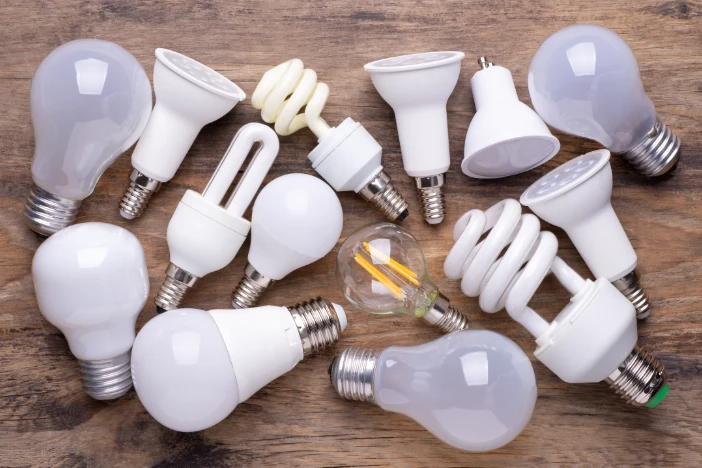
Shapes of light bulbs
Contemporary light bulbs are available in a wide variety of shapes and sizes. This is needed to accommodate the ever-growing number of fixtures, lamps and lighting applications. Each light bulb has its own set of requirements, which can make finding the right one difficult. This section of our guide reviews some of the labeling, designations and components of the most common lightbulbs.
Understanding labeling codes
Manufacturers have developed a labeling system to help communicate light bulb requirements and recommendations for their lights. It can be confusing without a Rosetta Stone to decipher these codes.
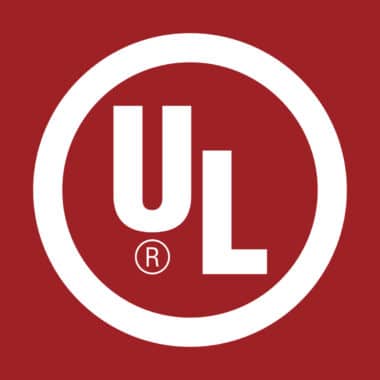
Label definitions
- Bulb – Designations consist of two parts: a letter(s) and a number. The letter represents the shape of the bulb, while the number indicates the width (in eighths of an inch).
- Base – This identifies how the bulb connects to the socket of the light. It is designated by a letter(s) (type) and number (diameter in millimeters).
- Wattage – The electrical power of a light or lamp is expressed in watts.
- Voltage – The force of electricity flow is expressed in volts.
- UL/cUL Approved – The Underwriters Laboratory (U.S. and Canada) inspects, tests and certifies lighting products to ensure safety.
Most common bulb shapes
Below are the most common shapes, their letter designations and typical usage.
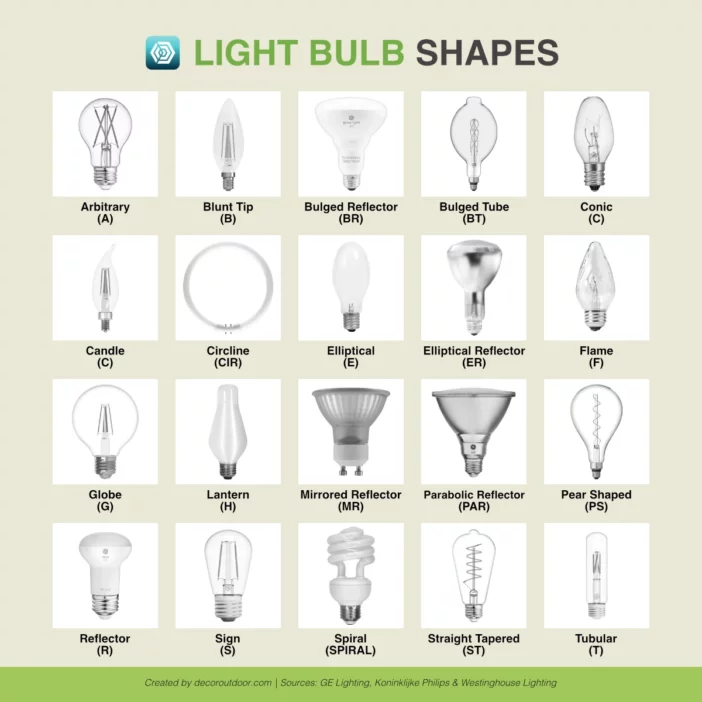
- Arbitrary (A) – Standard use for most home lighting
- Bullet or Blunt Tip (B) – Best when used for decorative lights or ceiling fans
- Bulged Reflector (BR) – Interchangeable with Reflector bulbs for recessed track or can lighting
- Bulged or Blown Tube (BT) – Usually used for table lamps
- Conic (C) – Mostly found in small appliances
- Candle (CA) – Great option for decorative use in chandeliers and wall lights
- Circline (CIR) – These can be found in some modern table lamps
- Elliptical (E) – Regular and dimpled versions of this bulb can be found in sports arenas, car dealerships, parking garages and industrial lighting
- Elliptical Reflector (ER) – Most often used in recessed lighting applications in hotels, offices and residences
- Flame (F) – Similar to Candle bulbs, these have blown or etched glass designs that make the light appear to flicker and are used in chandeliers, wall lights and restaurants
- Globe (G) – These spheres are often seen in vanities, marquees or modern chandeliers, pendants and wall lights
- Lantern Chimney (H) – Used in some decorative applications such as chandeliers, post or coach lights
- Mirrored Reflector (MR) – Usually used for commercial or retail accent and spot lighting
- Pear Shaped (PS) – An exaggerated version of the standard A19 type with straight sides, this bulb is used in retail stores and for utility company applications
- Parabolic Aluminized Reflector (PAR) – These hard glass lens bulbs directionally control the light beam from a focused spot to a flood, which makes them great for outdoor use or as recessed downlighting in museums and retail establishments
- Reflector (R) – Interchangeable with Bulged Reflector bulbs for recessed track or can lighting
- Sign (S) – Works with lower-wattage lamps or signage in casinos, theaters and hotels
- Spiral or Twist (SPIRAL) – These CFL bulbs can replace the standard household A19s
- Straight Tapered (ST) – An extended version of the Sign bulb that is used in marquees and commercial signage
- Tubular (T) – Based on the type of bulb, these can be used in commercial signage, parking garages or appliances
Base or plug types
The light bulb base or plug type varies from light to light. Carefully check which is required for the socket, before buying a new light bulb. There’s nothing more frustrating than getting home and realizing you bought the wrong one and having to go back to Home Depot.
Screw (E)
Most American home lighting applications use light bulbs with Edison screw bases that twist clockwise into the socket. They are designated by the letter E and a number representing the diameter in millimeters.
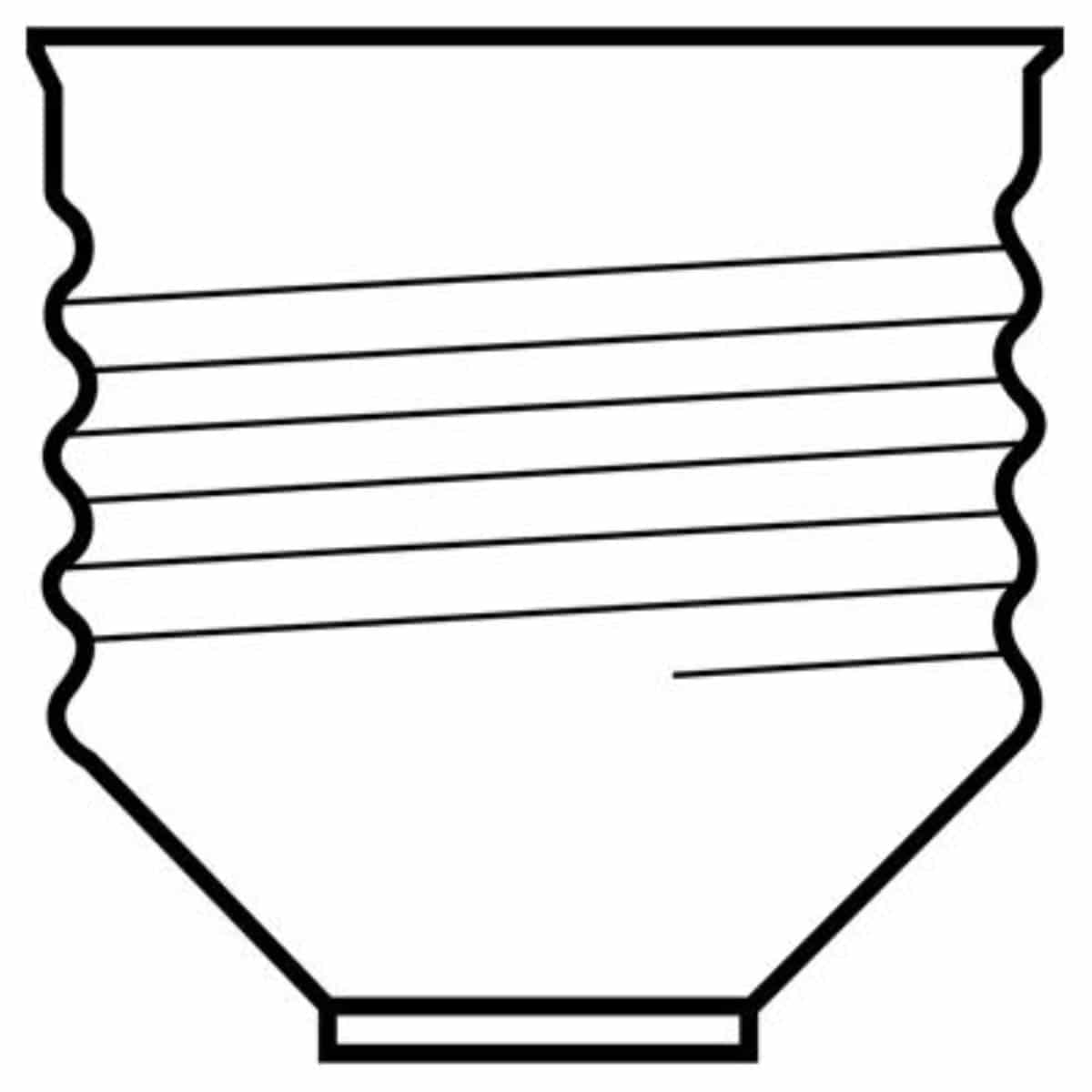
Bayonet (BA)
This base typically has two male pins on either side that fit into corresponding female slots in the socket and lock with a clockwise twist. It is the standard in many countries associated with the British Empire and is usually designated by the letters BA, followed by the diameter.
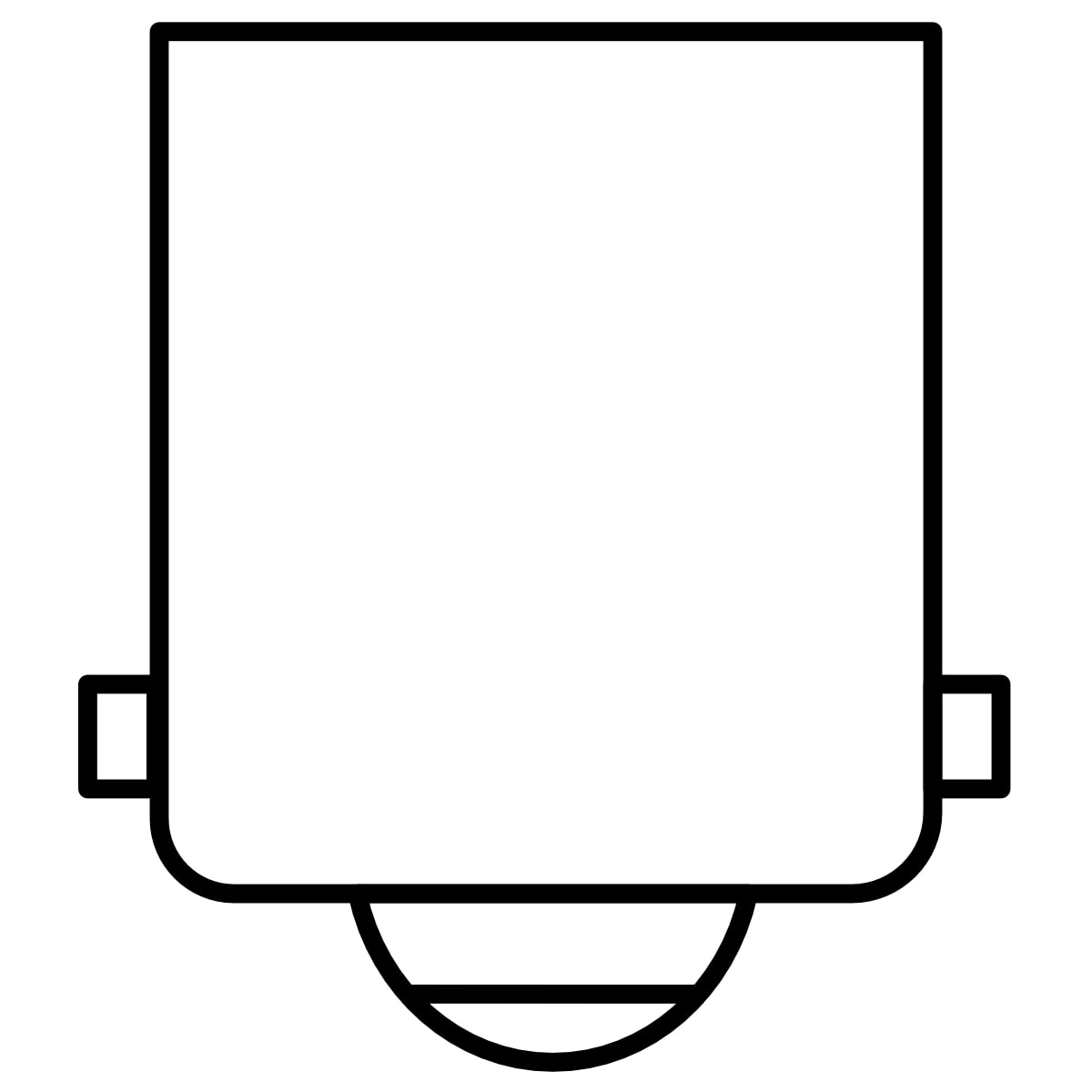
Bi-Pin or Bi-Post (G*)
Two pins or posts extend from the end of these bases and either plug into the socket or twist and lock. The International Electrotechnical Commission (ITC) has designated bi-pin base connectors as an international standard design for lamps. They are usually identified by the letter G, followed by another letter (extra feature) and a number, or just a number that indicates the pin spread in millimeters.
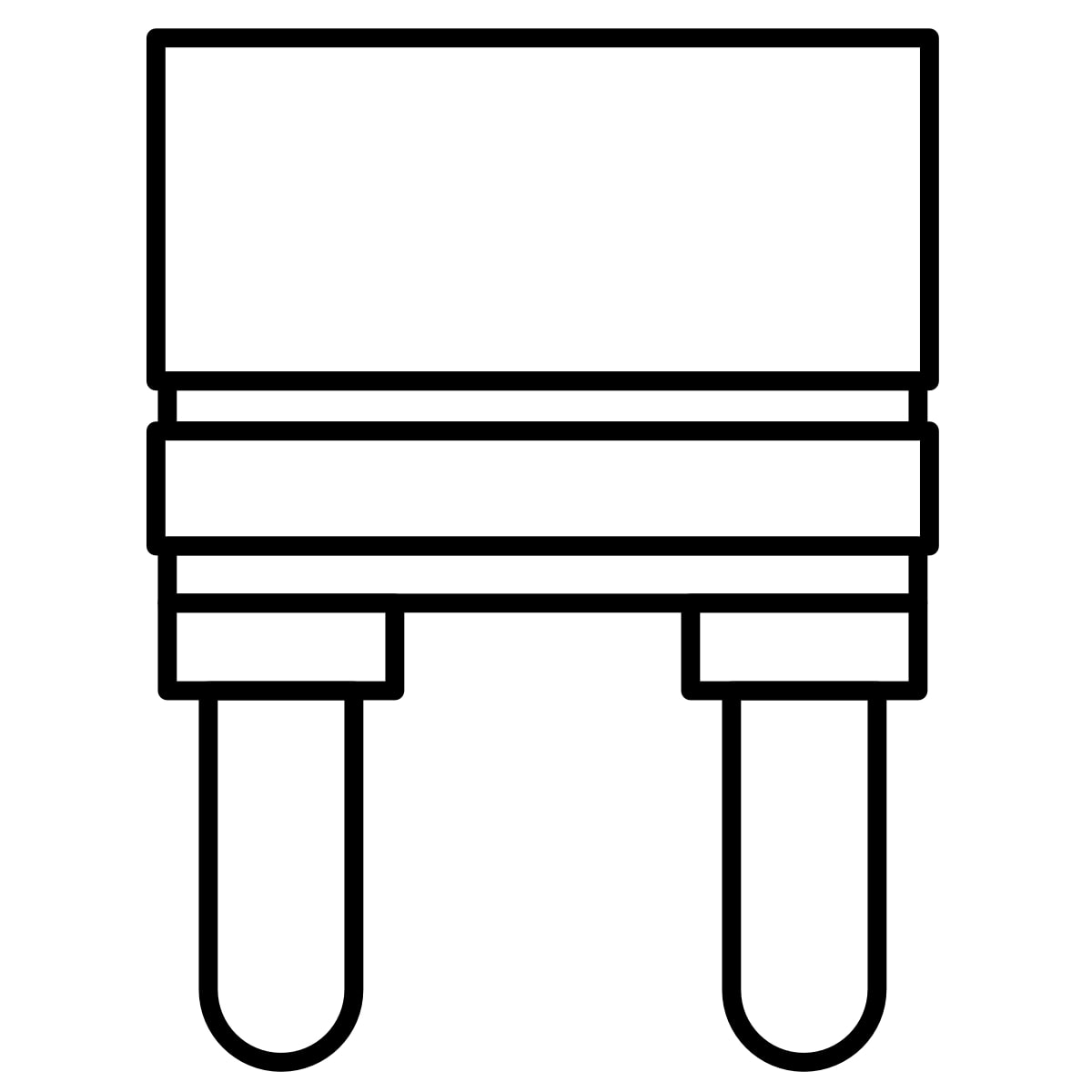
Wedge (W*)
Many small light bulbs utilize a wedge design base. These are similar to Bi-Pin bases, but they have two wires that contact the sides of the socket instead. Their wires are typically embedded outside a plastic base on which the bulb is mounted. It’s usually narrower at the tip than the bulb, which gives it its wedge shape. They are identified by the letter W, followed by other letters that detail the exact type and a number to specify the thickness in millimeters.
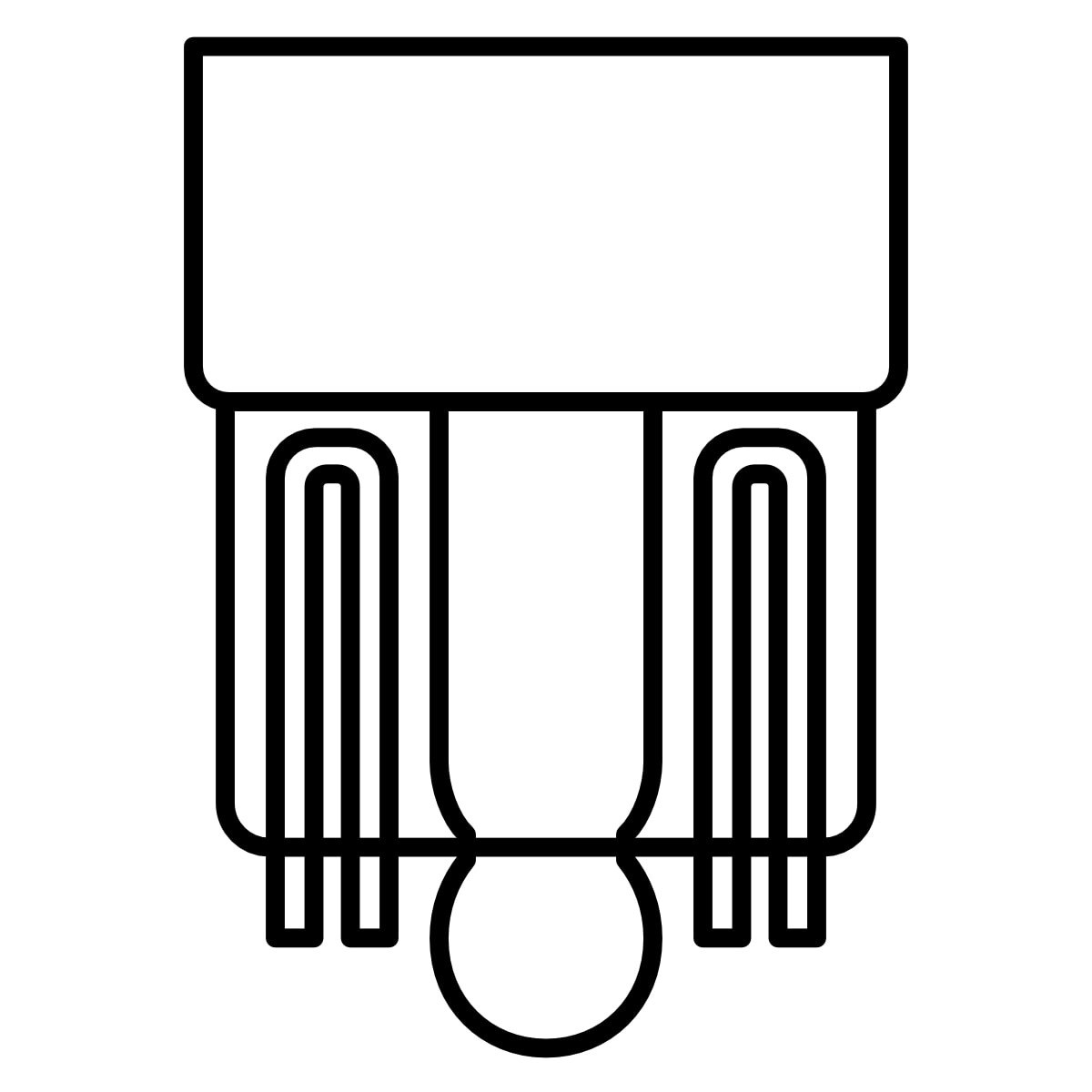
Light bulb designs versus capabilities
The design of a light bulb is a critical factor in assessing compatibility with various lamps but its functional capability is too. The next section of our guide identifies the illumination requirements of different room types and compares lightbulbs.

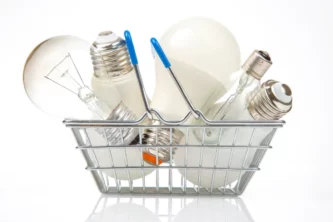
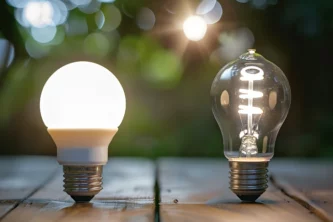
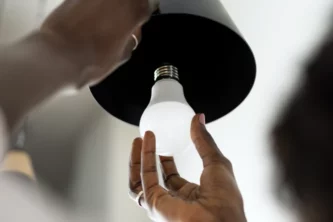




Leave a Reply